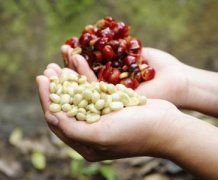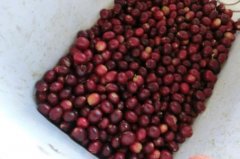A brief introduction to the Flavor and Taste of Fine Coffee in the chaotic Climate of Manor Ireta in Panama

Panama is by far the narrowest country that shares the Atlantic and Pacific coastlines. And this has a far-reaching impact on coffee production. Central America is a long isthmus from northern Mexico to southern Colombia, connecting North and South America. Panama is located in the southernmost part of Central America, so the country runs from east to west, not from north to south as people think. This means that the coast of the Caribbean (Atlantic) is in its north, while the Pacific is in the south.
In the coffee-producing region of Chiriqu í, the hometown of world-renowned estates such as Hacienda La Esmeralda, Elida Estate, Finca Nuguo, and Finca La Mula, the oceanic climate is a huge system that covers the entire hemisphere only 60-70 km from the ocean. Other currents in the Caribbean originate as far away as Iceland, while some east-west currents in the Pacific Ocean originate half a world away off the coasts of Japan and Indonesia. On the island of Panama, which is less than 100 kilometers wide, these global climate systems intertwined and collided, creating amazing microclimate change. The wind swirled and changed direction; it rained without warning, and the clouds floated on the hills with fog and ice rain.
In the middle of these chaotic climates, Willem Boot, the boutique coffee farm in Panama, and the owners of two Panamanian farms, Finca Som í an and Finca La Mula, are also award-winning varieties of rosy summer coffee. In February 2015, I went to Finca La Mula Manor with the professional manager of Boot, along with my friend Kelly Hartmann, a Panamanian native. In summer in Panama, the climate from January to April is much drier than when I first visited Panama. But Boot reminds me that when you get to the farm, you will find that "dry" is only relative. "this is basically a forest in the clouds, and when the clouds come, the temperature will drop sharply." This is how Boot describes it. We climbed the steep hillside of the manor and passed through the thick clouds that covered all the coffee that was first brought to Panama by European settlers in the 19th century. In the past, Panamanian coffee did not have a very good reputation, and its output was only 1 / 10 of that of its neighbor Costa Rica, but now the coffee industry's focus on boutique coffee has made Panama more and more interested in growing coffee. Panama's geographical advantage is that it has many distinctive microclimate areas suitable for coffee cultivation, and Panama also has many persistent and professional coffee growers. This means there will be a lot of very good coffee in Panama, but these coffees are often associated with high prices.
The high price of coffee in Panama is mainly caused by the following factors:
Land price: for the people of North America, they very much want to buy a stable and beautiful land at a low price. Panama is such a place.
More Panamanian farmers export coffee in the name of manors to emphasize their manors
Important Notice :
前街咖啡 FrontStreet Coffee has moved to new addredd:
FrontStreet Coffee Address: 315,Donghua East Road,GuangZhou
Tel:020 38364473
- Prev

Price characteristics and Flavor description of Coffee beans in Ireta Manor A brief introduction of Grinding scale varieties
The price characteristics of coffee beans in Ireta Manor Flavor description Grinding scale Variety introduction acidity, wet aroma and alcohol thickness are all components of flavor, and it is their balance and homogenization that produce our overall sense of flavor. The overall impression of aroma, acidity, bitterness, sweetness and mellowness can be used to describe the overall feeling of contrast coffee. no, no, no. Panamanian Coffee with the Rose Summer of Emerald Manor
- Next

The first prize of the Panamanian national treasure bean cup test contest-Rosa
Maybe you don't know the story about rose summer, the fragrance of flowers, tropical fruit, strong sweetness; these are the feelings that rose summer has always brought to us. Properly baked, they make you feel like sipping the fragrance of a bouquet of flowers. It was originally a coffee sample that was brought to the coffee experimental garden in Costa Rica and distributed to several small farms.
Related
- Does Rose Summer choose Blue, Green or Red? Detailed explanation of Rose Summer Coffee plots and Classification in Panamanian Jade Manor
- What is the difference between the origin, producing area, processing plant, cooperative and manor of coffee beans?
- How fine does the espresso powder fit? how to grind the espresso?
- Sca coffee roasting degree color card coffee roasting degree 8 roasting color values what do you mean?
- The practice of lattes: how to make lattes at home
- Introduction to Indonesian Fine Coffee beans-- Java Coffee producing area of Indonesian Arabica Coffee
- How much will the flavor of light and medium roasted rose summer be expressed? What baking level is rose summer suitable for?
- Introduction to the characteristics of washing, sun-drying or wet-planing coffee commonly used in Mantenin, Indonesia
- Price characteristics of Arabica Coffee Bean Starbucks introduction to Manning Coffee Bean Taste producing area Variety Manor
- What is the authentic Yega flavor? What are the flavor characteristics of the really excellent Yejasuffi coffee beans?

